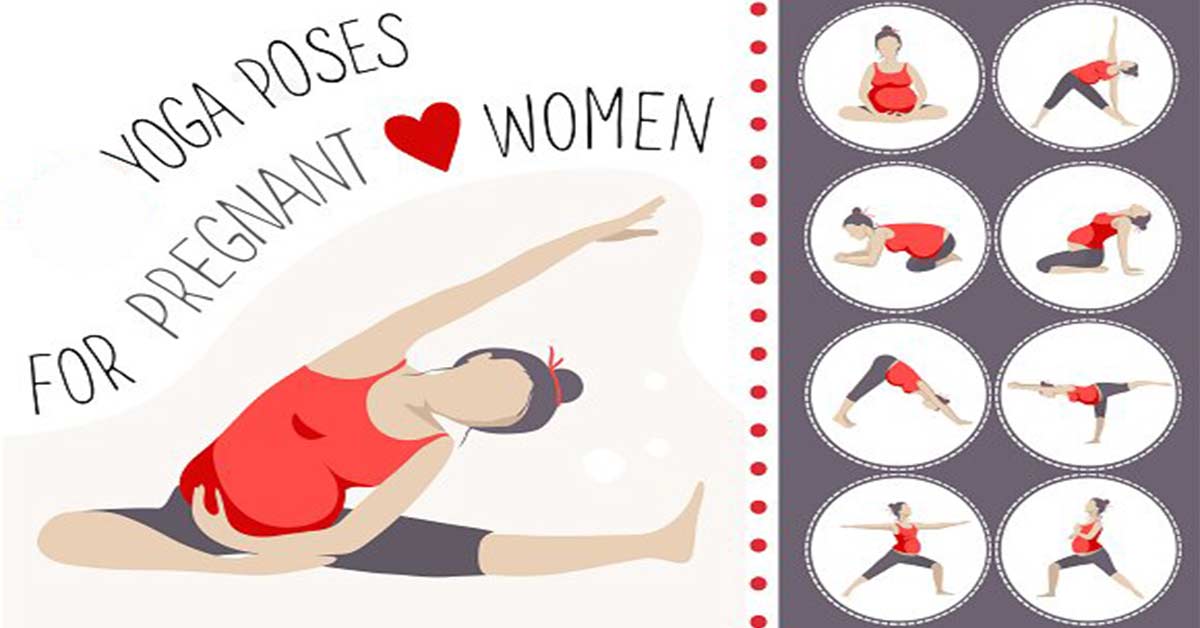
24 Jan 2020 HYN Himalayan Yoga Academy
What kinds of Yoga for Pregnant Women? Pregnant women are advised to undergo good routines that include balanced nutrition, physical work, and good lifestyle. It is very important to stay in balance and perform all the duties when you have such a responsibility and rites for new generation. However, the conditions are critical for pregnant women who want to perform physical work like yoga. Prenatal yoga might help you to prepare for labor and promote your baby’s health as well.
Proper guidance and advice should be required so that the health both the mother and the baby remain healthy and perfect. Prenatal yoga is the one that provides you with the requirements of physical work. When you are pregnant, your body comes across with rapid changes.
Yoga reconnects and makes the journey fruitful and wonderful. It is a great path to prepare the pregnant woman. Yoga during pregnancy helps you to create space for both your baby and your internal organs. However, make sure that you only do what feels good and avoid muscle strains, extreme pressure, and tension exercises.
Benefits of yoga for Pregnant Women
Much like other types of childbirth-preparation classes, prenatal yoga is a multifaceted approach to exercise that encourages stretching, revitalizing, mental centering, focused breathing, and positivity. Research suggests that prenatal yoga is safe and can have many merits for pregnant women and their babies.
- Activates the body and improves health.
- Improve sleep, Gives complete rest, Reduces stress and anxiety.
- Increases the strength, flexibility, and endurance of muscles needed for childbirth.
- Decrease lower back pain, nausea, vomiting, headaches, heart beats, and shortness of breath.
- Prenatal yoga can also help you meet and bond with other pregnant women and prepare for the stress of being a new parent.
- Yoga keeps them peaceful, calm, silent, emotionally balanced, happy, and more alert.
- Yoga rites determine the beauty of future baby with full of new vibes and thoughts.
A typical prenatal yoga class might involve
Consume Water: You must consume plenty of water to remain hydrated. You and your baby both require water a lot for the proper functioning of all the systems present in your body. If you drink less water, you can feel dizzy, faint, or even come across fatigue, which is not good for your health and the baby.
Proper Diet: You must always eat healthily, but if you are pregnant, you must take care of your calorie intake. You must eat the right kind of food that helps you and the baby to grow well during your pregnancy. Consume foods that are rich in nutrients, vitamins, and minerals. You must consume 300 extra calories every day for the proper development of the baby. You must eat foods like green vegetables, peas, eggs, fish, milk, etc., to meet the demands of your growing body.
OM Chants, Subtle Exercises, Birth preparation exercises
Gentle stretching: You’ll be encouraged to gently move different areas of your body, such as your neck and arms, through their full range of motion.
Asanas: While standing, sitting, or lying on the ground, you’ll gently move your body into different positions aimed at developing your strength, flexibility, and balance. Props such as blankets, cushions, and belts might be used to provide support and comfort. Asanas are Vrikshasana, Bidalasana, Marjariasana, Birabhadrasana I, II, Baddha –konasana, Kandarasana, Balasana,
Breathing and Life Force: You’ll be encouraged to focus on breathing in and out slowly and deeply through the nose. Prenatal yoga breathing techniques might help you reduce or manage shortness of breath during pregnancy and work through contractions during labor.
Pranayama: Anuloma- Viloma, Svaasa Kriyas; Bharamari Pranayama – Sit comfortably. Close your eyes. Placing your index fingers on the lobes of your ears, take a deep breath. Exhale slowly and make gentle humming sounds. Do this 5 to 15 times.
Rest: At the end of each prenatal yoga class, you’ll relax your muscles and restore your resting heart rate and breathing rhythm. You might be encouraged to listen to your breathing, pay close attention to sensations, thoughts and emotions, or repeat a mantra or word to bring about a state of self-awareness and inner calm.
Proper Sleep: You need proper sleep, Yoga Nidra – Yogic sleep; Dhyana: silence meditation
Chanting: Making your own sounds during pregnancy and birth is a powerful way to regulate your breathing. It enables you to focus and relax as you deal with the pain that is associated with pregnancy and labor.
Precautions
- You should learn yoga under competent Yoga masters. Yoga is not the physical trainings, this is science of life for new life.
- Yoga practice needs to be discontinued if you find the absence of movement of the baby or severe back pain, fainting, etc.
- You must use chairs in prenatal yoga classes for your third trimester. So, pregnancy yoga students must use props like chairs, blankets, bolsters, etc. for safety.
- You must avoid inversions during pregnancy.
- If you have a low weight concerning the age of your baby, only avoid more physical activities.
- You must avoid yoga if you have a history of miscarriage.
- If you come across trimester bleeding, you can do pranayama and Dhyana.
- If the yoga student has nausea, dizziness, or fatigue, avoid yoga.
- Consult a doctor, if you experience pain other than yoga practice, rapid heartbeat, short of breath, heart palpitation, and difficulty in walking, back pain.
- You must avoid yoga in hot and humid weather.
